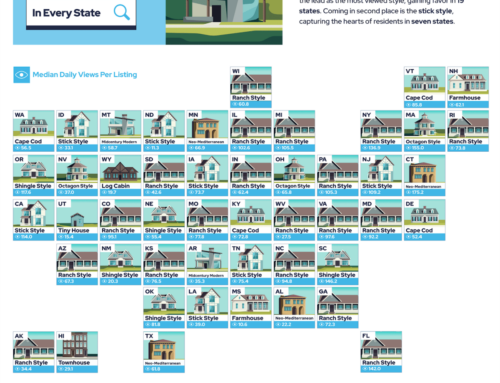Apr 6, 2023
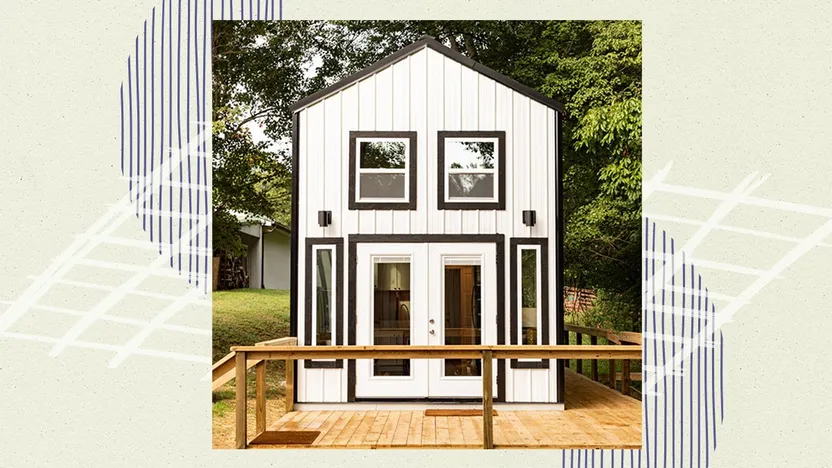
In her mid-50s, Laurie Granbeck decided she wanted to downshift to a more relaxed pace of life. So in the summer of 2020, the digital project manager sold her condo in Minneapolis and moved to Greenville, SC, where she planned to rent for a while until she found the perfect house.
But local home prices, which hovered in the mid-$300,000 range at the time, were high enough to give her pause.
“Due to the uncertainty of the times we live in and my age, I didn’t want to get [locked] in to a high mortgage,” she says.
That’s when an intriguing opportunity came across her radar: a local news segment highlighting a new tiny-house development named Creek Walk Community.
“I learned they were taking orders,” she recalls.
Although the homes weren’t built yet, she was enchanted by the online renderings of sleek, surprisingly spacious, two-story dwellings. In fact, Granbeck had researched going tiny already but had found that these diminutive dwellings were often difficult to find, build, and finance.
She set up an appointment with the company spearheading this new project, Eclipse Tiny Cottages. To her surprise, she learned that Eclipse’s properties would cut her monthly housing costs in half.
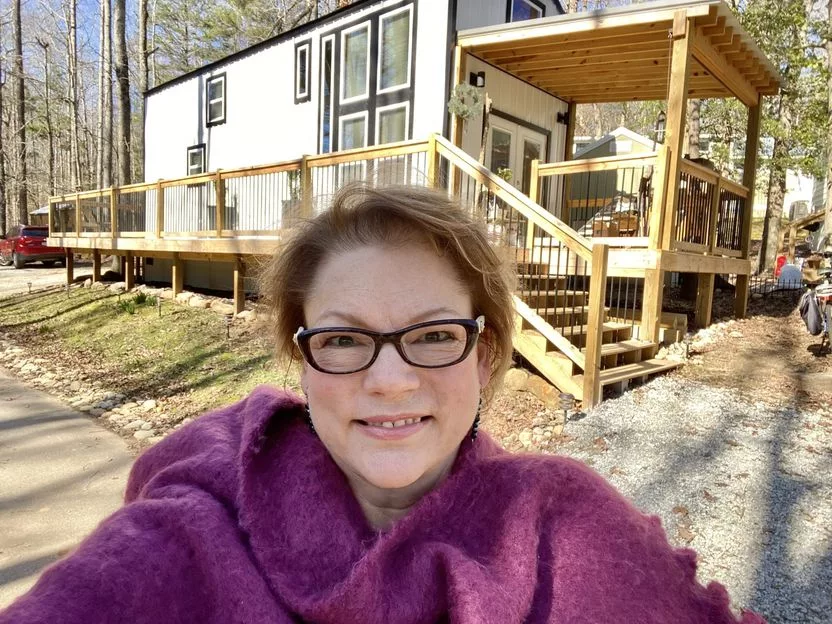
“My monthly payments went from $2,650 per month in Minneapolis down to $1,250 per month with my tiny home,” she says.
Granbeck was sold and, in December 2021, moved into her new 399-square-foot domicile. Even with two dogs, she felt the space didn’t feel cramped.

“Having an upstairs bedroom and bathroom—yes, I can stand up upstairs—makes a huge difference in my livable space,” she says. And although she was just the second buyer in this community, many more have piled on since then.
“I love it here,” says Granbeck. “My dogs sit out on the deck and watch the birds and say hi to neighbors as they pass by with their pets. Ultimately, this move has allowed me to leave the cold and craziness of Minneapolis for a warmer, quieter life.”
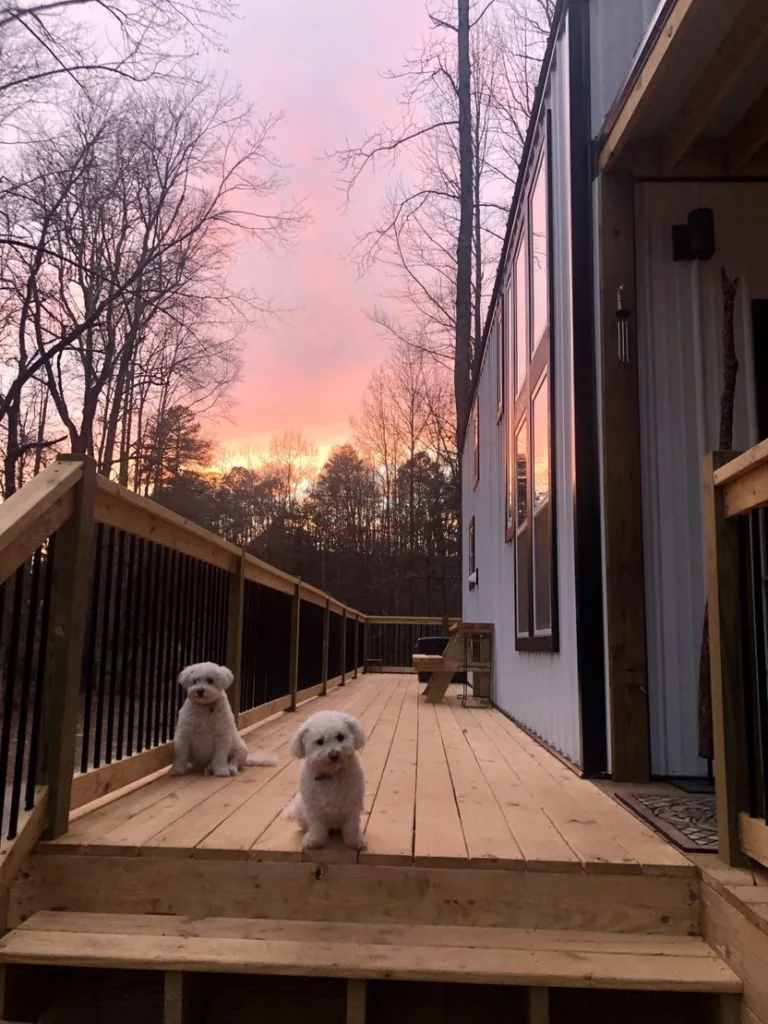
How tiny houses are helping homebuyers save money
With mortgage rates rising and the inventory of homes for sale at record lows, the tiny-house market is filling the gap for homebuyers who are willing (or even excited) to go small.
In fact, in a 2023 survey of homebuying trends, Cinch Home Services found that 32% of Americans are interested in purchasing a tiny house. One of the top demographics is women over 50, like Granbeck, who make up over 40% of tiny-home owners today.
Part of the attraction is a desire to live a less wasteful, more eco-conscious life. But another solid motivator in today’s rocky economy is saving money.
Surveys show that a whopping 68% of tiny-home owners don’t have a mortgage, 60% have no credit card debt, and 55% have more savings in the bank than other homebuyers.
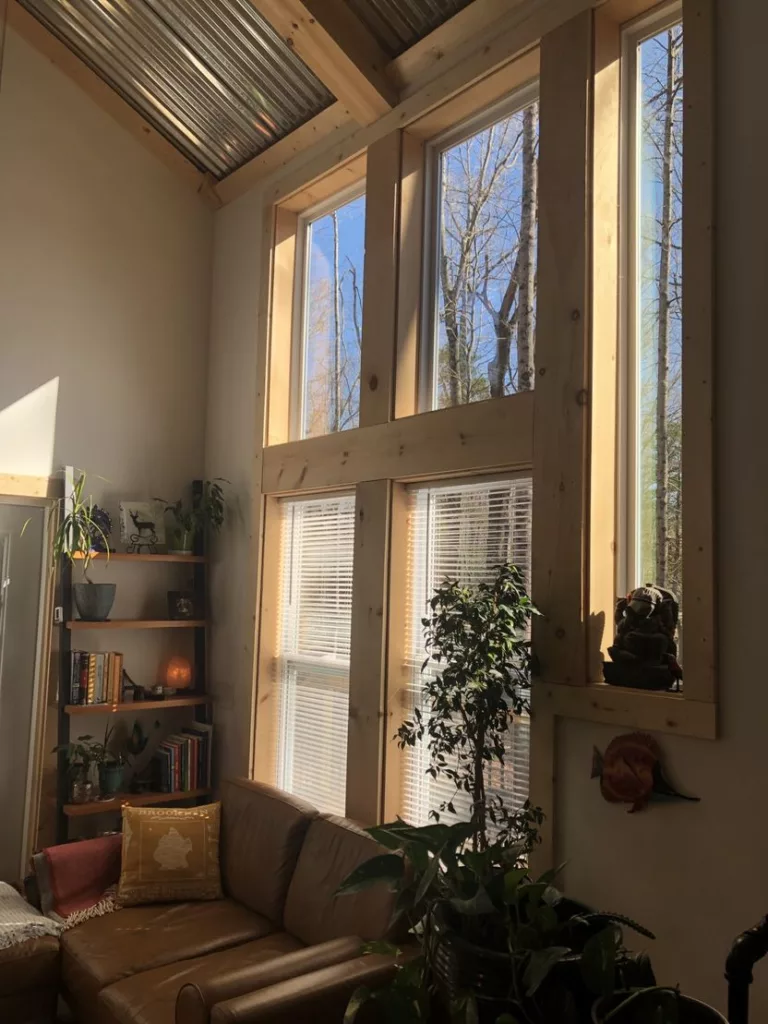
The challenges of going tiny
Yet despite a growing desire to downsize their dwelling, many discover it’s not always a simple process.
Financing is one common hurdle. Many tiny homes don’t qualify for a traditional mortgage, which leaves homebuyers to take out personal loans, which come with higher interest rates. Given tiny houses cost anywhere from $30,000 to $120,000 depending on the size (typically 400 to 600 square feet), this can be problematic.
“Part of the problem with tiny homes is their price point is high enough to where they’re a little expensive for a personal loan, but too low for what a mortgage should be to make a lot of sense,” says Eclipse Tiny Cottages founder Justin Draplin. “So they fall into this weird middle area.”
Some tiny-house buyers combined cash savings with a small personal loan to make the purchase. Others finance tiny homes the same way they’d finance mobile homes or RVs. And some lenders are finding more creative ways to finance tiny homes.
Eclipse, for instance, offers financing that puts the baseline price of its smallest house (measuring 128 square feet) as low as $99 a month.
“Through many hours of complicated legal and accounting consultations, we have found ways to essentially subsidize the financing of our tiny homes for buyers by offering tax breaks to a network of third-party investors,” says Draplin.
“For example, all our cottages have a solar roof, so we can create solar tax credits through solar power installation programs from which outside investors can benefit, and we pass along the savings,” says Draplin.
Where to build: Another piece of the tiny-house puzzle
Financing aside, another hurdle with tiny houses is they can’t be plunked down just anywhere, even if someone owns the residence and the land it’s on.
“It varies by jurisdiction—it could be state law, local, city, county,” says Draplin. “So if you think you want to build a tiny home, you’ve got to look at where you’re trying to live and talk to the local planning department to find out what they allow and what you have to do to get it approved.” If you can get it approved.
Many tiny-home builders get the permits they need when they agree to lease rather than sell the land, along the lines of an RV park.
“Where I have my first community, basically the county came and said, ‘This is how you have to do it: You can’t sell lots, you have to do a land lease,’” says Draplin. “Because they didn’t have a precedent for a tiny-home community, they were like, ‘Well, we know what an RV park is, so we’re going to treat it like it’s an RV park,’ even though clearly it’s not.”
In fact, Draplin hates the comparison with RV parks because he thinks that tiny homes (or “tiny cottages,” as he likes to call them) are aspirational in that “people are making a choice that this is how they want to live, as opposed to people who feel like they’re ‘stuck’ living in a trailer park.”
Yet Draplin has learned to make the best of this designation by planning these communities in ways that minimize the costs for his tiny-house residents.
“If we would have been forced to develop our community like a traditional new-home subdivision, then we would have had to have minimum lot sizes, and if that happens, then your costs go up,” says Draplin. But with the cost of the land pooled together and divided among the community’s residents (paid for as part of the monthly community maintenance fees), this maximizes cost-effectiveness for everyone. Granbeck’s community fees, for instance, cost $480 per month.
Also, having no required lot sizes allows him to build the community in a way that works with the land, Draplin says.
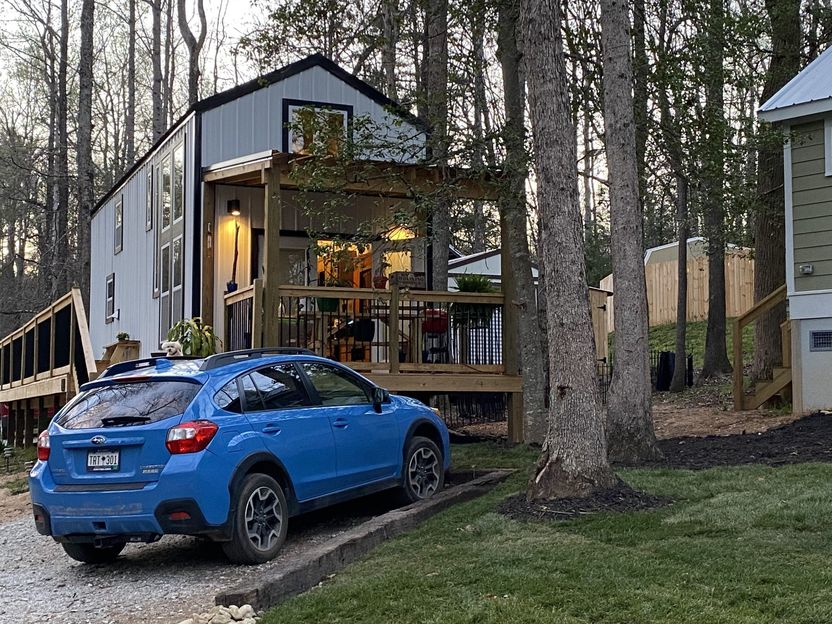
“It feels very much like a campground partly because we kept the trees,” he says. “When you think about a new subdivision or even some old ones, there aren’t a lot of big trees. But we are able to nestle all these cottages in between 40-foot oaks.”
Although the land is leased, these tiny houses can be sold—and, in the five years that Eclipse communities have been viable, Draplin says they have yet to have someone resell a tiny home for less than what they paid. And right now, most are making sizable profits.
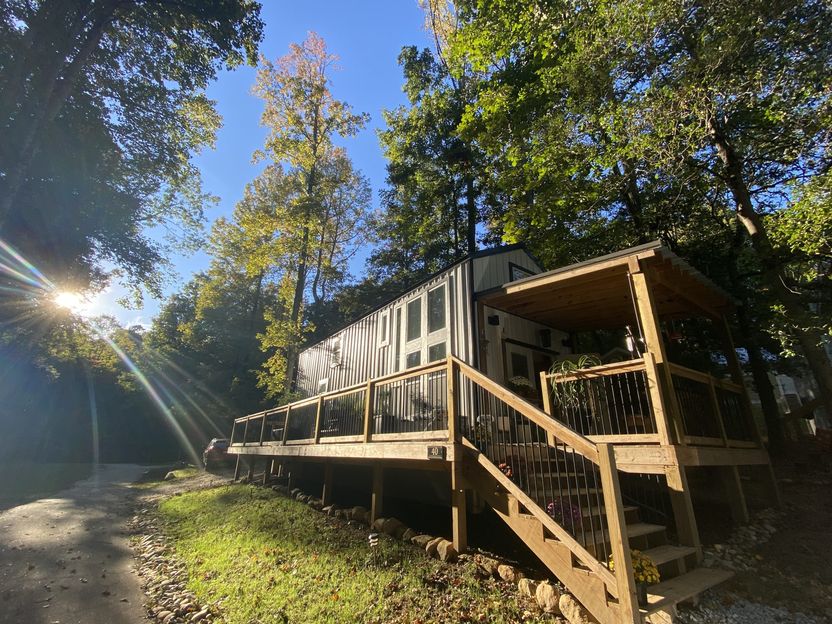
Draplin says the efforts his company has made to pave a smoother, less circuitous road to tiny-home ownership is a model that’s bound to take off—and help many more join the movement.
“Our tiny cottages are in communities where it’s a total package. We have one bill that covers everything, including their lot lease, property taxes, electric, water, sewer, trash, and outdoor maintenance—so that’s part of our simplicity,” says Draplin.
The tiny-house lifestyle, explained
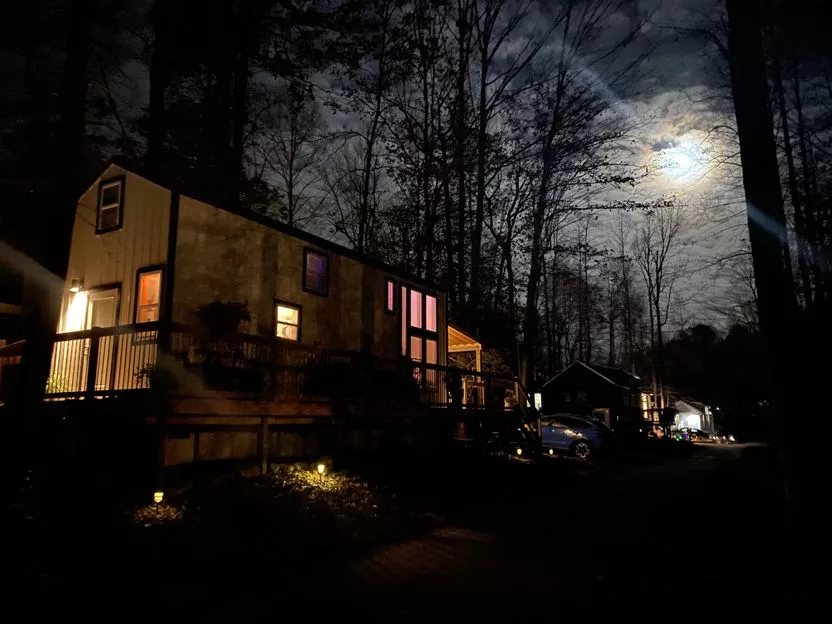
No doubt, all of this sounds great, but what’s it actually like living tiny?
“I adjusted quickly,” says Granbeck.
Thanks to her home’s functional, space-saving design, “I could bring in a number of my quality furniture pieces and my artwork that I would have had trouble parting with,” she says. “My entertainment center, my bedroom set, my armoire—all fit perfectly.”
And for the things that didn’t fit?
“Storage is not an issue because I have lots of storage in my back room and out in my shed,” says Granbeck, who also uses the insulated, climate-controlled shed as her home office. “I also have a storage locker just up the hill from my tiny house, but I am working on whittling down my belongings to eventually get rid of the unit.”
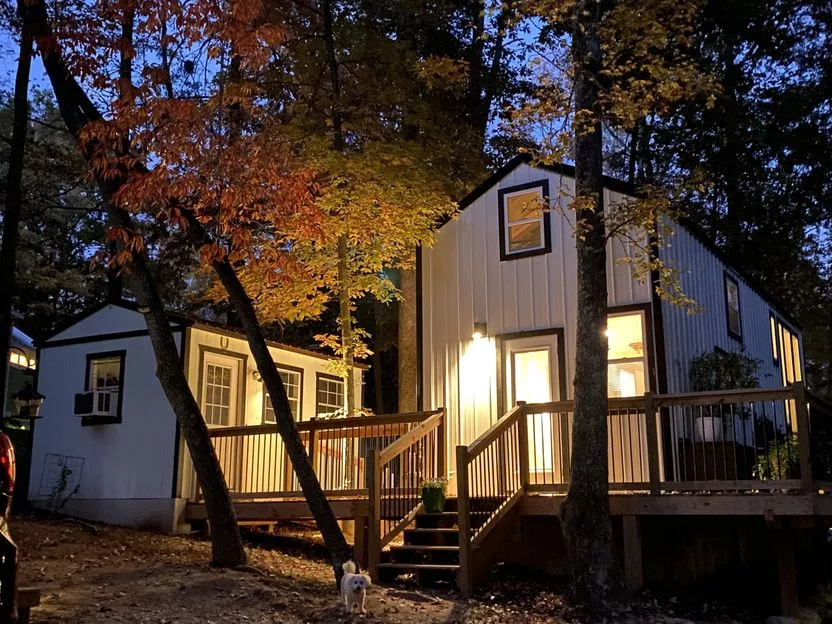
Beyond the downsizing, Granbeck finds herself embracing the eco-friendly lifestyle.
“I have solar power backup, which came in handy this past winter when we had a power outage,” she recalls. “And I plan to expand the battery backup, so in the future I can run for a couple of days without any power or a recharge. I’m also scheduled to get a rainwater-catch/filtration system this spring, so basically I’m practicing my off-grid skills in the event I need it in the future.”
That focus on the environment also extends to the community garden where many residents, including Granbeck, grow—and share—their own vegetables.
“It’s a very tight-knit community,” says Granbeck, “and we work hard to maintain that.”

Source- https://www.realtor.com/advice/buy/own-a-house-for-99-a-month-the-new-improved-tiny-movement-thats-helping-homebuyers-save-big/



